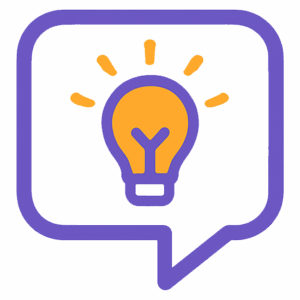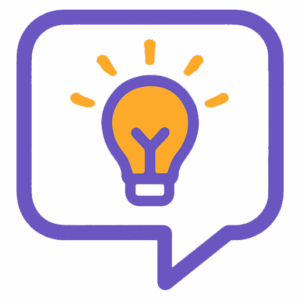Flashcards have been used for decades to memorize vocabulary, formulas, historical facts, and complex concepts. But modern cognitive science shows there’s more to flashcards than just flipping cards over and over. When used strategically, flashcards can boost long-term retention, improve recall speed, and make learning more efficient.
This guide explains how flashcards work, scientifically proven techniques to maximize their effectiveness, and common mistakes to avoid.
1. Why Flashcards Work
Flashcards are based on active recall, a memory technique where you actively retrieve information instead of passively rereading it. Research shows that forcing your brain to recall strengthens neural connections and makes the information easier to remember later.
Flashcards also encourage spaced repetition, which optimizes review intervals to match how your memory naturally works. Instead of studying everything repeatedly, you review information just before you’re about to forget it, maximizing efficiency.
2. The Science Behind Effective Flashcards
Active Recall
When you flip a flashcard and try to answer before seeing the result, your brain retrieves stored information, which strengthens memory pathways. Passive studying (like rereading notes) doesn’t trigger the same cognitive effort.
Spaced Repetition
Spaced repetition systems (SRS), such as those used in Anki or LanGeek’s Daily Words, schedule cards based on how well you know them. Studies show that spacing reviews improves long-term retention compared to massed repetition.
The Testing Effect
Repeatedly testing yourself (instead of just reading) enhances memory consolidation. Flashcards turn studying into a low-stress test session, leveraging this effect.
3. How to Use Flashcards Effectively
Step 1: Keep It Simple
Each flashcard should cover one concept only. Overloading cards makes recall harder.
❌ Bad Card:
“What are the causes and effects of World War I?”
✅ Better Approach:
- Card 1: “What triggered World War I?”
- Card 2: “What was the Treaty of Versailles?”
Step 2: Use Both Sides Intelligently
Flashcards work best when they link a cue to a response.
For example, language learners can put the English word on one side and the translation, image, or example sentence on the other.
Step 3: Incorporate Images
Adding visuals improves dual coding—combining verbal and visual memory for stronger recall.
Step 4: Apply the Leitner System
The Leitner System is a structured way to practice spaced repetition:
- Start with all cards in Box 1.
- If you answer correctly, move the card to the next box.
- If wrong, send it back to Box 1.
- Higher-numbered boxes are reviewed less frequently, saving time while focusing on weaker areas.
Step 5: Mix Contexts
Shuffle cards regularly to avoid context-dependent memory. This forces your brain to truly recall instead of just memorizing patterns.
Step 6: Combine Flashcards with Real-Life Practice
Flashcards are powerful, but isolated memorization isn’t enough. Use the words, facts, or formulas you’re learning in:
- Writing exercises
- Conversations
- Problem-solving tasks
This strengthens contextual understanding and moves knowledge into long-term memory.
4. Digital Flashcards vs. Paper Flashcards
| Aspect | Digital | Paper |
|---|---|---|
| Efficiency | Automates spaced repetition | Manual review needed |
| Portability | Accessible anywhere on devices | Requires physical cards |
| Engagement | Can include images, audio, and stats | Offers tactile interaction |
| Best Use | Large vocabularies and structured learning | Small sets, active writing |
Modern apps like Anki, Quizlet, and LanGeek Daily Words integrate spaced repetition automatically, making them ideal for language learning and other complex subjects.
5. Common Flashcard Mistakes to Avoid
- Cramming Everything at Once → Overloads your working memory.
- Writing Long Sentences → Makes recall harder.
- Skipping Regular Reviews → Forgetting peaks without spacing.
- Focusing on Recognition, Not Recall → Always test yourself before flipping.
- Neglecting Context → Combine flashcards with usage exercises for better retention.
6. Flashcards for Language Learning
Flashcards are particularly powerful for vocabulary acquisition when paired with techniques like:
- Images + Words → Builds stronger memory associations.
- Example Sentences → Encourages contextual understanding.
- Audio Integration → Helps improve pronunciation and listening.
- SRS Tools → Automates review schedules based on performance.
Platforms like LanGeek and Anki combine these methods to help learners move vocabulary into long-term memory more effectively.
References
- Cepeda, N. J., et al. (2006). Distributed practice in verbal recall tasks: A review and quantitative synthesis. Psychological Bulletin, 132(3), 354–380.
- Karpicke, J. D., & Roediger, H. L. (2008). The critical importance of retrieval for learning. Science, 319(5865), 966–968.
- Kornell, N., & Bjork, R. A. (2007). The promise and perils of self-regulated study. Psychonomic Bulletin & Review, 14(2), 219–224.
- Leitner, S. (1972). So lernt man lernen (“How to Learn to Learn”). Freiburg: Herder.

